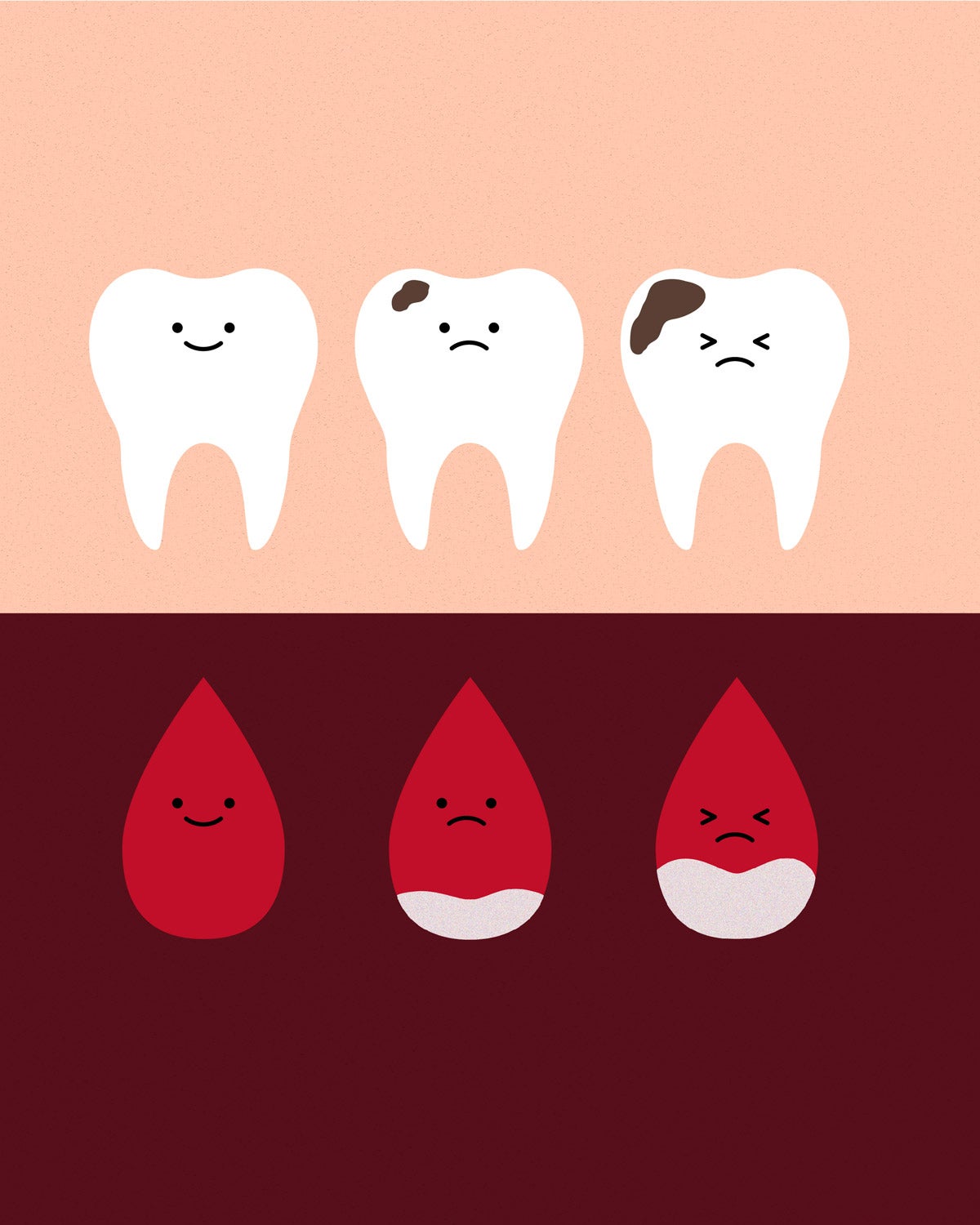
Ideas
Here’s how to put teeth in the U.S. response to diabetes
Rising rates of diabetes in the United States are exposing another problem—we need to know more about oral health.
Diabetes and oral health are connected, but in ways we don’t understand well. In fact, we largely separate oral health from the rest of health care, even though in 2020 the National Institutes of Health issued a report saying oral health is “inextricably linked” to a number of health conditions, including diabetes. The NIH also said the potential connection between diabetes and oral health has changed gum disease “from a local disorder in the mouth to a more systemic disease with general health implications.”
We know, for instance, people with diabetes face increased risk for oral infections. Recent research also suggests that gum disease may increase one’s risk of developing diabetes and that oral care could be helpful for both managing and preventing the disease. But we don’t have a clear understanding of the role dental providers might play in improving diabetes outcomes, because of a lack of available data.
Sign up for Harvard Public Health
Delivered to your inbox weekly.
That data is lacking because many dental offices don’t have the technology they need to store and analyze dental health data, something I routinely see in my work as CEO of a dental software company. Regulations such as the Health Insurance Portability and Accountability Act, the Affordable Care Act, and the Health Information Technology for Economic and Clinical Health Act have led to standards for the collection and storage of most medical data, but not so much for the dental industry. Recent legislation aimed to improve health record interoperability and accessibility but failed to include the dental industry. The dearth of dental electronic health records makes it difficult for providers, researchers, and public health officials to study oral health and its connections to diseases like diabetes across their respective fields.
In 2020, the National Institutes of Health issued a report saying oral health is “inextricably linked” to a number of health conditions, including diabetes.
As a result, our treatment approaches and public health messaging are almost certainly missing important pieces of information. For instance, we know gum disease begins in adolescence. But the most recent national data on adolescent gum disease was collected in 1994, and the NIH says it must be reassessed in light of vaping, which increases the risk of oral and gum infections by 43 percent. This topic requires urgent investigation and further research, both of which will be easier with upgraded technology.
Our oral health is not separate from our overall health, even if our health care system keeps them siloed. In addition to diabetes, conditions such as pregnancy, HIV, and cardiovascular disease are all impacted by oral health. In fact, oral health providers could help identify people at risk for diabetes if given the proper training and ability to communicate with outside providers. As with most health conditions, earlier diagnosis can play a huge role in improving a diabetes prognosis.
Once we establish the widespread use of standardized electronic dental records, integrating them with other medical records is necessary to understand the connections between oral health and disease, and whether oral health interventions are effective at preventing or treating certain diseases. Consolidated dental data can help us understand emerging trends and effective treatment approaches, and integrated electronic patient records could help us narrow divisions in healthcare.
Updating how dentists collect and store patient data and communicate with patients could also address another problem: People don’t go the dentist regularly. Nearly 30 percent of people in the U.S. have not been to a dentist since early 2020. Research suggests that adults with diabetes are even less likely to go to the dentist, despite their higher oral health risks. These disparities are most evident in low-income communities of color, where people are also more likely to have diabetes.
For example, making use of cell phones and text message to reach out to patients might help dentists establish continuity of care. About 97 percent of people in the U.S. own a cell phone, and 99 percent of received mobile text messages are opened.
Better technology could also help add data from dental deserts, which are increasing in size in the U.S. We have seen mobile dental clinics used to provide care to aging and disabled populations, pediatric patients, and other groups that overlap with those at risk for or living with diabetes. These more affordable clinics rely on well-functioning tech to outsource data and appointment management, but not all have the up-to-date resources they need. Standardizing the systems these mobile clinics use could improve their reach and efficacy while also providing researchers with a wealth of data on high-risk and often overlooked populations.
This seems like a simple point—interoperable systems built around standards make it easier to serve customers and to do research. But as my company works to build a dental data warehouse accessible to all, we’re finding that technical problems aren’t the only issue. We need more industry-wide collaboration, for one, to develop standards. And too many dental providers are afraid of the upfront costs associated with upgrading. A commitment to true collaboration is necessary.
Technology companies should also partner with community organizations that have the potential to leverage tech to reach underserved populations and fight for better health care policy. And we need to make sure the tech options we have available are actually used by as many providers as possible, including those who treat Medicaid patients and those without access to a regular provider.
We could have a system where doctors and dentists work together to care for their patients, with earlier diagnostics, better prevention, and improved care. Of course, we’ll need a better approach to health insurance, too—25 percent of U.S. residents don’t have dental insurance. But in the meantime, technology companies and dental providers should already be working together to create the systems that will bring dental health into the mainstream of caring for our overall health.
Source image: olindana / iStock


